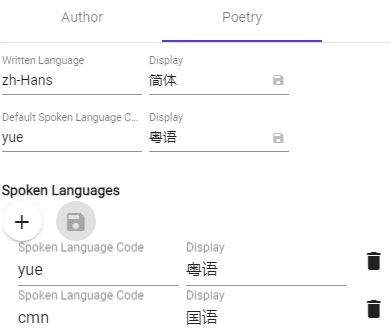Settings for Chinese Poetry
In the 20th century, written Chinese diverged into two canonical forms, simplified Chinese and traditional Chinese. And there exist wide varieties of spoken Chinese for the sake of ryhme.
Written Language
The Written Language code should be from ISO 639-1, and optionally a code of ISO 15924 which is for the representation of names of scripts.
For example, the language code for Chinese is "zh". If you primary written language is Simplified Chinese and what the app to be able to provide Traditional Chinese representation of your poetry, you should declare the written language as "zh-Hans". Likewise, if you draft in Traditional Chinese, then you should declare the written language as "zh-Hant".
Spoken Languages
The Spoken Language code should be from ISO-639-3. For example, there are 16 declared spoken languages/dialects for Chinese, and you should pick one like:
- "yue" being displayed as "粤èª"ï¼â广ä¸è¯â or "广å·è¯".
- "cmn" being displayed as "åèª" or "æ®éè¯".
- "nan" being displayed as "é½åè¯" or "å°èª".
